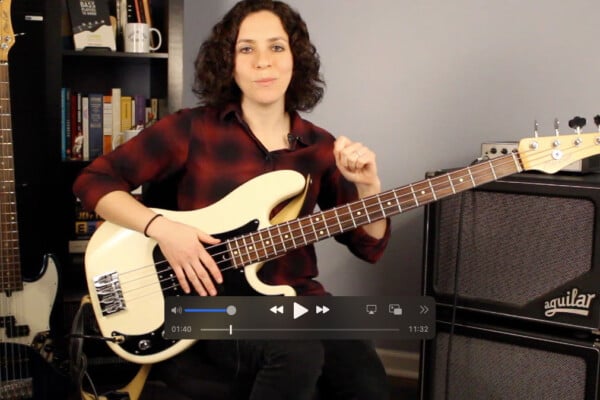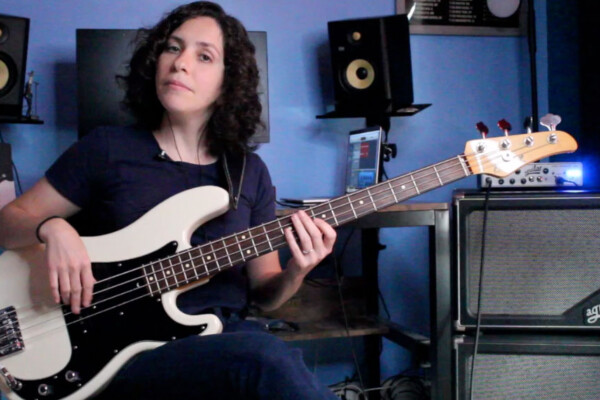Blues Endings: Tips for Avoiding the Train Wreck
Early on in my musical career, a wise man once told me that the mark of a good band is one that starts together and ends together. This doesn’t mean that whatever is played in the middle doesn’t matter, but it alludes to the importance of how well-rehearsed the players are or how well they feel each other out if they’re a pick up band. Starting together is certainly the easiest of the two… all you need is a key, a feel, a decent count to four, and off you go. Ending together is a different story. It requires paying attention, good communication skills, knowing the right notes to play, and possibly knowing the specific arrangement of the song.
In this column, we’ll learn about blues endings in two different ways. First, we’ll discuss the ending within the context of the progression and highlight some of the common transitions that take us from the 12th bar of the progression back to the beginning. Second, we’ll examine a few different approaches to ending the actual song without creating a train wreck or having someone shout, “we’ll get it next time.”
The first ending topic, which helps us navigate the last few bars and then restart the progression, is focused on what we call the “turnaround” and it applies to bars 11 and 12 of the progression. If you’re reading this and thinking “wait… what? I thought the turnaround was bars 9 and 10,” then you’re correct. Both parts are known as the turnaround. Although they are different parts of the progression, they both function as a way of turning around to the I chord, just at different times. If someone is mentioning a change in the turnaround as they are explaining a song to you, you’ll figure out what they are referring to once you get the song underway.
The turnaround for the majority of blues tunes will go to the V chord for the last bar of the progression or for the final 2 beats of that bar. The second most common option is to stay on the I chord for bars 11 and 12. If you’re changing to the V chord, one common maneuver is to mimic the classic blues descending guitar lick that you’ll often find in a shuffle or slow blues. Start on the root note on beat one of the 11th bar and descend chromatically from the 7th: 1 ?7 – 6 ?6 – 5. Then listen to how the guitar player walks up to the 5th. They’ll usually start at either the 3rd or 4th and walk up chromatically. Do your best to mimic the rhythm; try to hear whether or not they push or anticipate the lick. If they aren’t playing the lick, you can still use it for the turnaround or you can move your pattern along with the chords as you normally would do. If the progression doesn’t go to the V chord for the last bar, remain on the I and continue a’shufflin. For playing non-shuffle blues, such as a rumba or a funkier blues, it is common for the rhythm players (bass, guitar, and keys) to play the pattern on the I chord and then “bump” or play a specific rhythm pattern or lick on the V chord.
Three verses and 48 bars of solos later and we’ve finally gotten to the end of the song! Hopefully the bandleader will make some kind of signal by holding up their hand, pulling up on the neck of their guitar, or making “this is the end of the song!” eye contact with you or the drummer. As long as you’re paying attention, it should be easy to pick up on it. If the bandleader is experienced at this, they’ll usually do this mid-way through the last verse or last progression of solos. From here, there are two common approaches to ending the song.
The first is to stop on the IV chord of the turnaround at bar 10, allow for the last vocal or instrumental phrase to be played, and then play the standard ending lick: 1 – 3 – 4 – #4 – 5 – ?7 – 7 – 8. Then, watch for the signal from the bandleader or drummer and hit the root note for the final punch. Listen for a ritardando during the lick or for hitting a #1 before ultimately hitting the final root. This will often depend on how the drummer decides to end the song or how the leader signals. There are variations to the ending lick, such as substituting 2 – ?2 – 1 for?7 – 7 – 8 or playing the regular ending lick described in the earlier section of the column. Get comfortable with these variations and then experiment with other possibilities once you understand how it works within the music.
The other option to ending the song is to repeat the last four bars of the progression—go from the V – IV turnaround in bars 9 and 10 and then remain on the I for two bars. It is common to repeat this three times while the vocalist repeats the last line of the song so keep your ears open and watch the bandleader for a cue. There will most likely be a stop on the final time you play the IV chord and it will be followed by the ending lick, just like the standard ending described in the previous paragraph.
Now that we’ve gone over the common song ending possibilities, the most important thing to remember about not train wrecking is to pay attention! Most ending fumbles are the result of poor communication and not being able to read the minds of the other players. If you’re stuck in a situation with a bandleader that doesn’t signal, you can still feel the ending coming or at least be prepared for it if you’re watching for it. Most songs follow the same format and if you’re in a jamming situation, there will come a time when everyone is looking at each other and waiting for someone to signal the ending. Also, since there are a couple of different note choice endings, chances are you’ll pick option A while the guitar player picks option B and there will be a few dissonant note clashes. That’s ok… you can make it all work out as long as you’re with each other rhythmically. Additionally, if you get the chance to rehearse the song or you’ve played with the bandleader before, you’ll notice certain tendencies in their playing and how they end songs. The more you pick up on this, the better you’ll understand the bandleader, and the longer you’ll have the gig.
Ryan Madora is a professional bass player, author, and educator living in Nashville, TN. In addition to touring and session work, she teaches private lessons and masterclasses to students of all levels. Visit her website to learn more!



